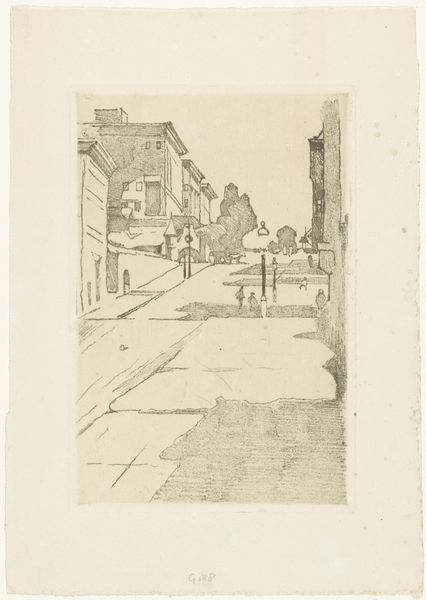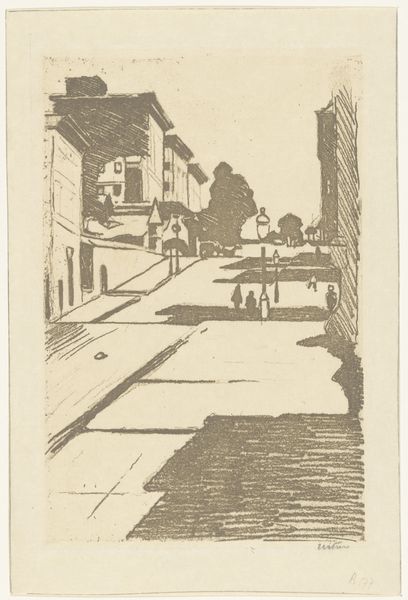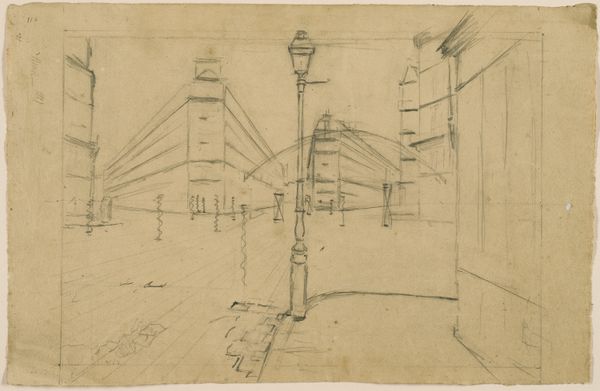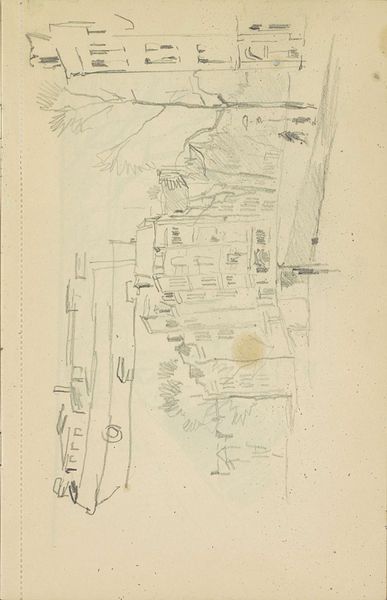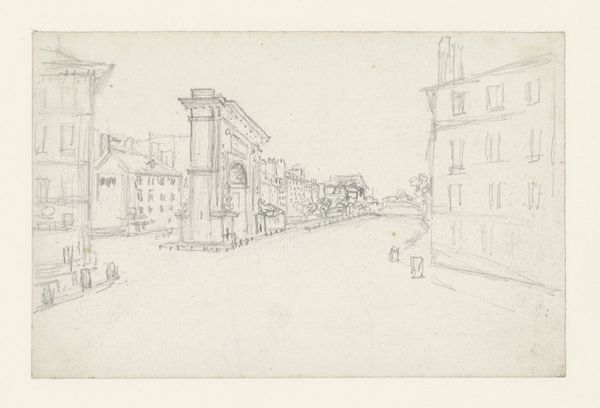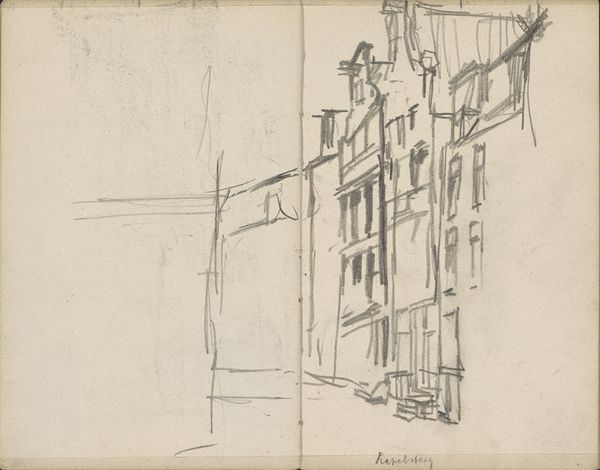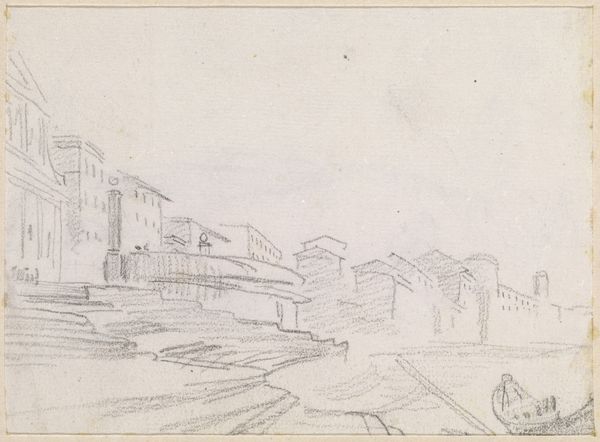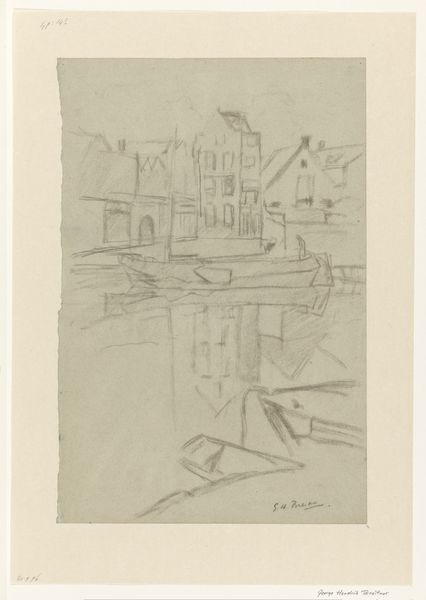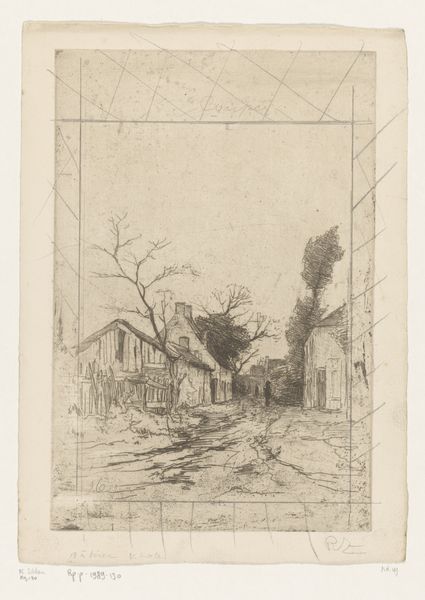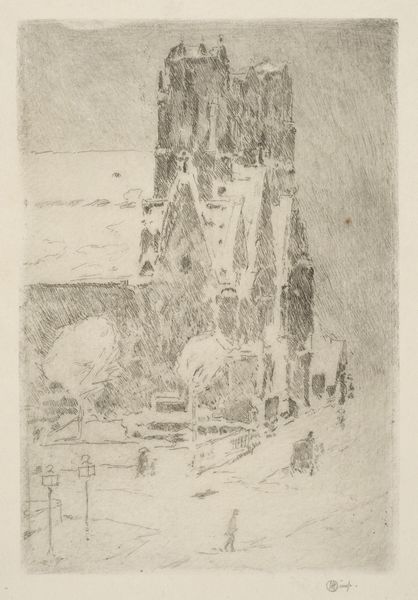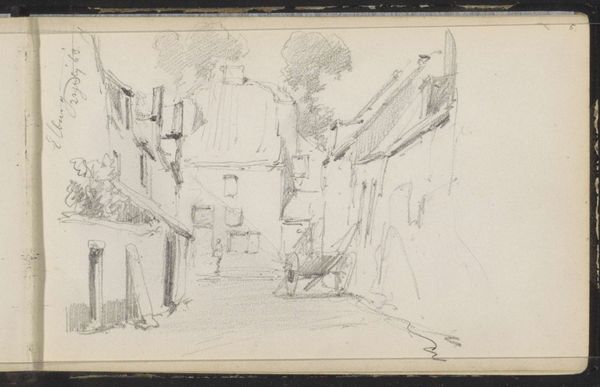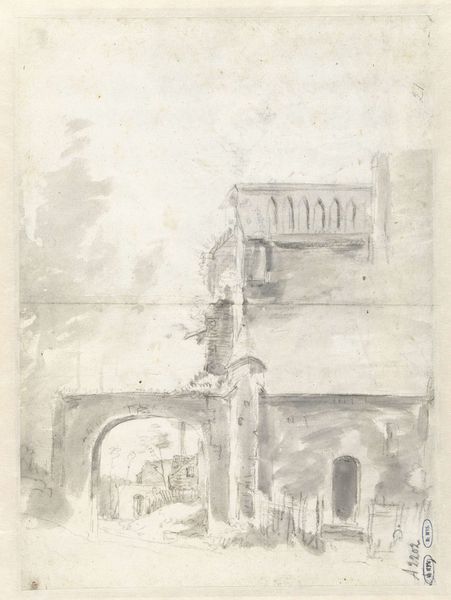
Dimensions: height 288 mm, width 243 mm
Copyright: Rijks Museum: Open Domain
Editor: So, this drawing, "Zonnig stadsplein Fairmont te San Francisco" – or "Sunny City Square Fairmont in San Francisco" – is attributed to Willem Witsen, and thought to have been created sometime between 1870 and 1923. It's a pencil drawing on paper, and the overall impression is of something fleeting, captured quickly. What grabs you about it? Curator: Well, immediately I see the gridded paper. It speaks to the work’s function as a preparatory sketch, maybe for a painting or print. Witsen, as a member of the Amsterdam Impressionism movement, was very interested in capturing modern urban life. It's intriguing to see San Francisco rendered by a Dutch artist. Does this external view shift the way you understand American urbanism in that time? Editor: That’s interesting… I hadn't considered the external perspective. I guess I just saw a typical cityscape, perhaps influenced by European styles, but from a Dutch point of view, it takes on a whole different meaning. Curator: Exactly. He’s not just documenting, he’s interpreting a foreign modernity through his own cultural lens. This reflects how art institutions and even individual artists participate in a larger global dialogue shaping perceptions of different societies. How do you think this sketch engages with ideas about cultural exchange, representation, or power? Editor: Hmmm… maybe it suggests a curiosity, a desire to understand, but also a certain distance, a foreignness in how he captures the scene. Like, he’s observing rather than participating. Curator: Precisely! It also brings attention to the artistic choices of an artist traveling to and representing somewhere distant from the places we would imagine his focus to be. By extension, is it possible to use similar interpretive techniques to contextualize present day sketches? Editor: I think that really adds layers to how I initially saw it. It's not just a street scene; it’s a document of cultural interpretation. Curator: It challenges us to look beyond the immediate subject and think about the artist's social positioning and the broader historical currents influencing their work. Thanks!
Comments
No comments
Be the first to comment and join the conversation on the ultimate creative platform.
